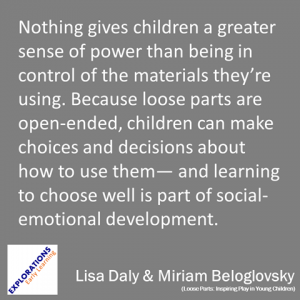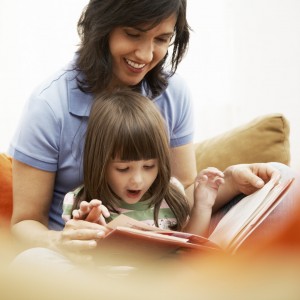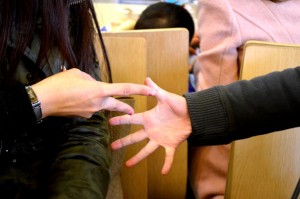Making choices is a skill, and during the early years is the best time for helping kids learn to make choices. Kids need opportunities and experience, as well as our example and guidance.

Have you ever noticed how kids will play with anything? It’s every bit as likely a child will play with sticks, rocks, bits of paper, plastic containers, raw pasta, buttons, empty bottles and other items in the recycling basket, as s/he will play with cars, dolls, puzzles, and other toys. As adults, we often forget that play is in the child, not the toy. In addition to that, there’s a critical reason kids will play with stuff: the child gets to control the play. With non-toys, kids get to make up the play. They have the choices and the control.
Jeff A. Johnson at Explorations Early Learning quotes authors and early childhood teachers Lisa Daly and Miriam Beloglovsky, “Nothing gives children a greater sense of power than being in control of the materials they are using. Because loose parts are open-ended, children can make choices and decisions about how to use them–and learning to choose well is part of social-emotional development. ” Now that we understand what’s going on in a child’s mind, we can better support and encourage play and making choices.
Loose parts are small, numerous items that kids can interact with in various ways. They really can be almost anything. One mom shared how her son had used several tampons to load as logs on his dump truck. Anything. While I was doing some spring cleaning, Little Sister found several items in a drawer, including a small bear that had come off a birthday cake decoration, a tissue, a cotton ball, comb, and other bits. She set these out in a flat basket and made a home for the little bear. Next, she placed the bear in various spots in the basket and pretended the bear moved things around. She was making choices constantly as she played. Her voice changed as she called me to come see and then decided she was done. Check what you have available for loose parts play. Kids will have suggestions too. As in this case, sometimes helping kids learn to make choices means staying out of the way.
Usually in a day, there are several times when kids can choose. What to wear is an opportunity for helping kids make choices. So kids don’t end up wearing just a swimsuit and rubber boots for going to the store, we can give them three or four options and let them pick the one they want. When setting the table, kids may be able to choose the color of their bowl or cup. Any time during the day, ask your child to go pick out a book and then you can sit down and share a snuggle and a story. You might want to ask your child why s/he chose that particular book. You can suggest some unrelated reasons, such as, “Did you choose this story because it smells good?” Kids will usually come up with a better reason.
 Kids will imitate others around them. We can tell our reasons for the choices we make. “I think the sky is cloudy and the wind is chilly so I am going to take a sweater, just in case.” Of course, kids seem to choose not to follow our example when it’s sensible, and to do exactly what we do when the choice isn’t so great.
Kids will imitate others around them. We can tell our reasons for the choices we make. “I think the sky is cloudy and the wind is chilly so I am going to take a sweater, just in case.” Of course, kids seem to choose not to follow our example when it’s sensible, and to do exactly what we do when the choice isn’t so great.
Choices affect all of us our entire lives. Helping kids learn to make choices is a way to give them an advantage, or in the words of the old expression, to help them “steal a march.” Can today’s play-of-the-day for your child include making choices?


